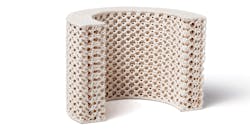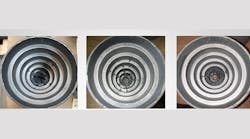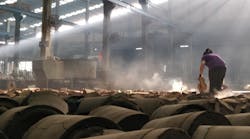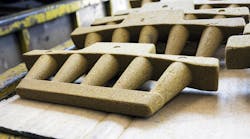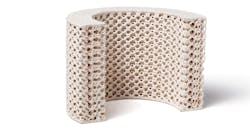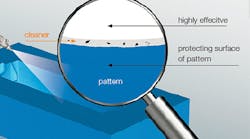Tooling and vents that are free of debris will decrease system downtime, thereby increasing the productivity of the operation. Keep in mind that metal cleaners are solvents formulated to dissolve binders: Always check the compatibility of the metal cleaner with the tooling material and any seals or plastic that may be in contact with it.
There are “environmentally friendly” or “green” metal cleaners offered by various developers, and used by some foundries, but these products typically do not work as completely and efficiently as the more advanced formulations. If handled properly, ASK’s metal cleaners are the most efficient and economical to use. ZIP CLEAN™ 500 breaks down cold-box resins in less than 15 minutes, as compared to older formulations that may soften the resin but never truly break it down.
Spraying or brushing the metal cleaner directly on the built up areas and then allowing it to soak for at least 15 minutes is the most effective way to clean metal patterns. Then, the softened films can be removed easily. This can all be accomplished without removing the tooling from the core machine, saving additional down time. Small parts can be immersed or soaked in the cleaner.
Ideally all excess cleaner should be removed prior to re-commissioning the tooling into the manufacturing process.
Personal protective equipment is essential for workers handling or applying the metal cleaners as most are corrosive and can cause irritation if mishandled. Operators should wear chemical resistant gloves and goggles. A face shield also may be recommended. In order to know for sure, it is critical that Safety Data Sheets (SDSs) should be read carefully and understood fully before using metal cleaners.
Join the Conversation. Email Your Questions for ASK Chemicals
Share your insights, opinions, and elaborate on the questions and the experts' answer(s). You must be logged in to the website in order to post your comments.
